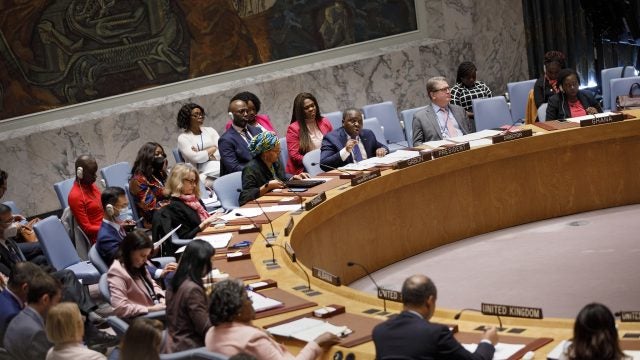
Title: Brother, Can You Pare a DIME?
The notion that there are four elements of national power—diplomatic, information, military, and economic—is hegemonic in American military thought. The DIME construct is a starting point for everything from schoolhouse curricula to military plans. And as the United States interacts with coalition partners and allies around the world, there is a tendency for this construct to expand (DIMEFIL) or even replicate itself into other typologies (PMESII-PT, ASCOPE). But is DIME really that useful for understanding national power?
Generally speaking, useful typologies have mutually exclusive parts and capture all the essential elements of a concept. For example, biologists have an extremely well-developed taxonomy for describing life on the planet that uses eight categories, from domain to species. In the softer sciences, scholars of interstate conflict classify different forms of violence depending on the nature of the action and the identity of the actors involved.
How does DIME compare to this standard? On the mutually exclusive criterion, most users of the DIME typology would admit that the different elements bleed into one another, with information and diplomacy sometimes hard to distinguish from one another and information acting in conjunction with all of the other elements. Even the new National Security Strategy recognizes this blurriness. Things get even fuzzier when more letters are added after DIME. At the same time, no typology has purely exclusive parts. Scholars of international conflict debate whether violent events classify as domestic disturbances, riots, insurgencies, civil wars, or interstate wars. On balance, while some level of typological fuzziness is to be expected, it would behoove scholars of national power to use a tighter typology.
The DIME construct fares slightly better on the comprehensive criterion. These four elements capture most of the essential facets of national power America uses to exert influence in the world. However, this focus on means is also debilitating, since it depicts all means as comparably effective. Focusing on means keeps strategists from thinking about the conditions under which some means might be more effective than others. Even though it risks overusing another typology, strategists might instead describe national power in terms of ways. In this case, national power could be segmented according to broad policy spaces, which might provide important clues about the potential effectiveness of a state’s influence.
In fact, there are really only three such broad policy spaces, which provide a starting point for rethinking the typology of national power. The first is force. The threat or use of physical coercion crosses an important threshold. There are differences in degree—threatening force is much different from actually using it, and the most powerful weapons, nukes, have not been used since World War II—but policies involving physical coercion are in a different domain than those that do not use or imply violence.
States also exert influence through a second policy space: markets. Manipulating markets is a different activity from using physical coercion to achieve national goals, but it is also a departure from letting market forces work. Markets for goods and services arise whether states want them to or not, but the choice of whether and how to be involved in markets is an important, persistent question for states.
Finally, states influence the world through ideas. Using force and manipulating markets convey important messages, but influencing ideas constrains opponents’ choices and sets a baseline for what is—and is not—acceptable behavior. For example, the Allies exerted significant efforts to fool German intelligence prior to the Normandy invasion, and American presidents from Eisenhower on recognized the Cold War as a struggle over ideas.
If there are only three policy spaces through which states exert power, what might this mean for diplomacy, information, and the bevy of candidate “elements” that make up national power? States will continue to conduct diplomacy and information operations, as they always have, but this new focus on force, markets, and ideas will allow strategic planners to think of policy options in terms of their qualitative effects, rather than ascribing some expected result to a policy because of the element of power with which it is traditionally associated. In other words, this is national power expressed through ways, not means. Diplomats, for example, often influence ideas, but sometimes they influence force and markets as well. Understanding DIME in terms of policy spaces will contribute to clearer strategy.
Is this new approach to national power an improvement? The distinction between force, markets, and ideas is cleaner than the distinction between the elements of DIME. It also allows scholars and practitioners to think of power in terms of influence instead of thinking of some actions as inherently more powerful than others. This new approach suggests a rough hierarchy of national power—using force is more costly than using markets is more costly than using ideas—but it does not see types of policies as confined to one policy space over another. This approach would certainly resist a proliferation of letters. At the end of the day, perhaps force, markets, and ideas should be the new coin of the realm.
. . .
Nathan W. Toronto is the author of How Militaries Learn: Human Capital, Military Education, and Battlefield Effectiveness (Lexington Books, 2018) and two military science fiction novels: Rise of Ahrik and Revenge of the Emerald Moon.
This paper was prepared and written in the author’s personal capacity. The opinions expressed herein are the author’s own.
Image Credit: Photo by Airman Dylan Myers\86th Airlift Wing
This is an archived article. While every effort is made to conserve hyperlinks and information, GJIA’s archived content sources online content between 2011 – 2015 which may no longer be accessible or correct.
Recommended Articles

This article explores the uncertain future of Arctic governance amid shifting global geopolitics. It argues that whether Washington and Moscow opt for confrontation or cooperation, multilateralism in the Arctic…

Twenty-five years ago, the United Nations Security Council adopted Resolution 1325, establishing a framework that underpins the Women, Peace, and Security (WPS) Agenda. The Resolution recognized both the…

When we analyze conflicts in the Middle East, we are not analyzing conflicts with isolated impacts but risks for global energy security. Recent conflicts in the Middle East have highlighted…